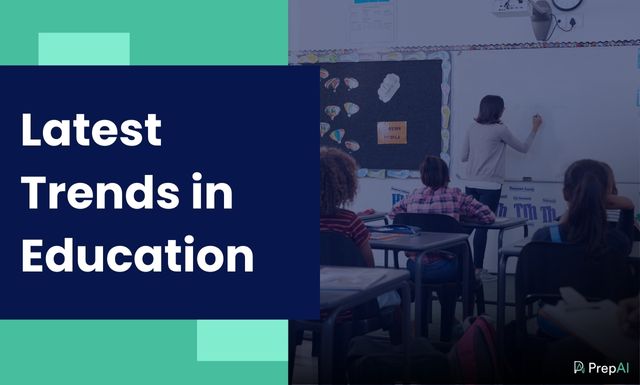The education sector is seeing many developments with technology becoming prominent. Here, we’ll discuss 21 latest trends in education and the dynamic shift in the industry from conventional subject-based teaching to student-based learning.
Education is among the largest industries in the world and accounts for more than 6% of GDP. According to HolonIQ, the industry’s global expenditures will reach $7.3 trillion by 2025. Like every other sector, education also adopts new methodologies and technologies to stay relevant.
Statistics show that the global EdTech market was valued at $143 billion in 2023 and is expected to reach $549.6 billion in 2033 at a CAGR (compound annual growth rate) of 14.2%.
With many disruptions to the industry, it can be hard to track the various trends in education and how these can impact learning opportunities around the world. For example, access to artificial intelligence has made it possible for educational institutions and parents to invest in AI quiz generator tools to create test papers and grade students’ answers.
In this blog, we’ll check out the twenty-one current trends in education and the overall landscape in the industry in 2024.
What is the Latest Innovation in Education?
Innovation in education is more about adopting the latest changes and bringing flexibility to conventional teaching or learning methods. This is mostly done by integrating technology with the education sector. While there are many innovations in the industry, blending Metaverse and learning can be termed the latest development. It combines AI, Metaverse, and education to create a virtual space for remote collaborations, real-time simulations, etc. It is also one of the trends in higher education where institutions can create a highly interactive 3D learning environment for students irrespective of their geographical locations.
What are the Current Trends in Education?
The education trends in 2024 are heavily leaning towards technology, be it the use of artificial intelligence-based tools for teachers, online learning platforms, or blended learning models. Here’s a list of the top trends in the education industry.
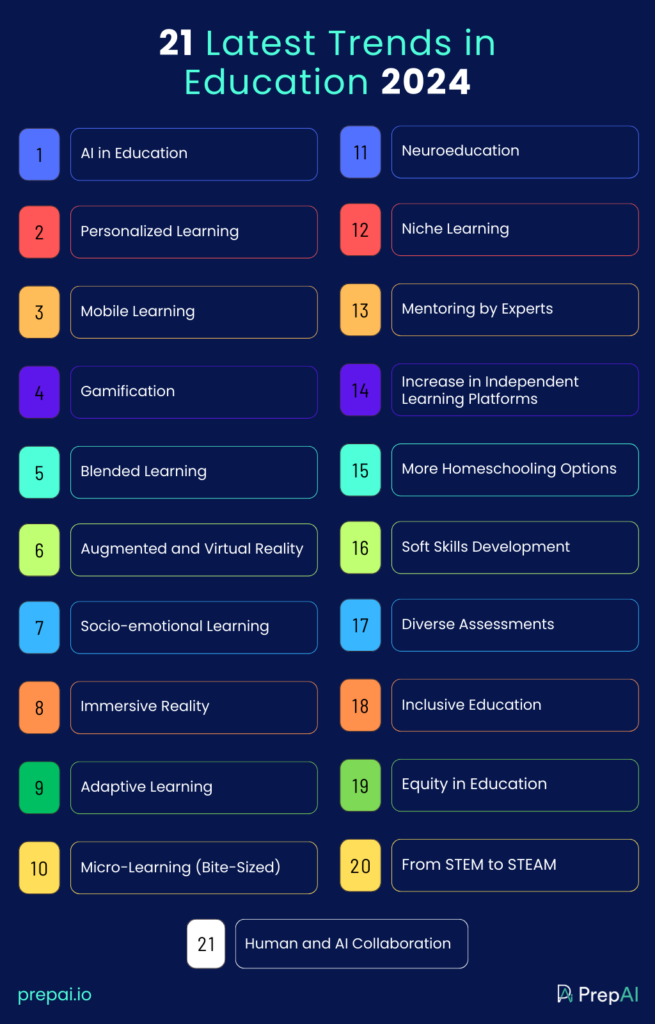
1. AI in Education
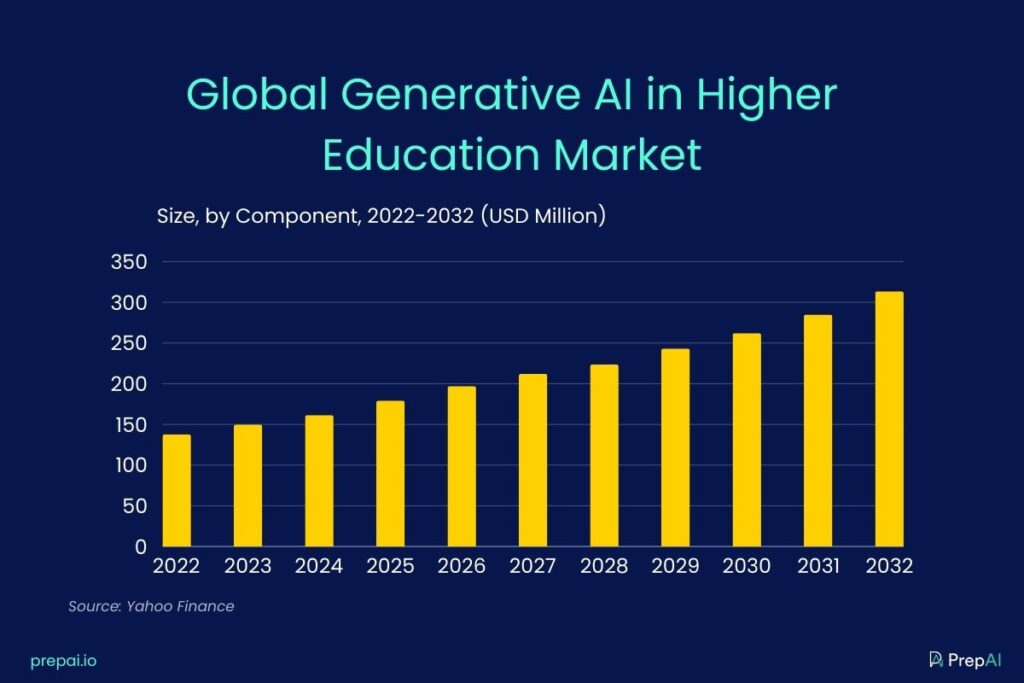
Artificial intelligence will become more prominent in the education industry. Be it schools, colleges, or professional training centers, AI can be used in many ways. For example, teachers can derive insights about students by using analytical tools. Generative AI like ChatGPT can help brainstorm ideas to create lessons. AI quiz generator tools like PrepAI, Quizgecko, Conker or Testportal can be used to automate the process of generating test papers, quizzes, etc., by providing input as text, file (PDF, Docx, Doc, etc.), video (link and files), and/ or Wiki search. The tools are meant to help teachers and reduce their workload. AI doesn’t replace teachers.
2. Personalized Learning
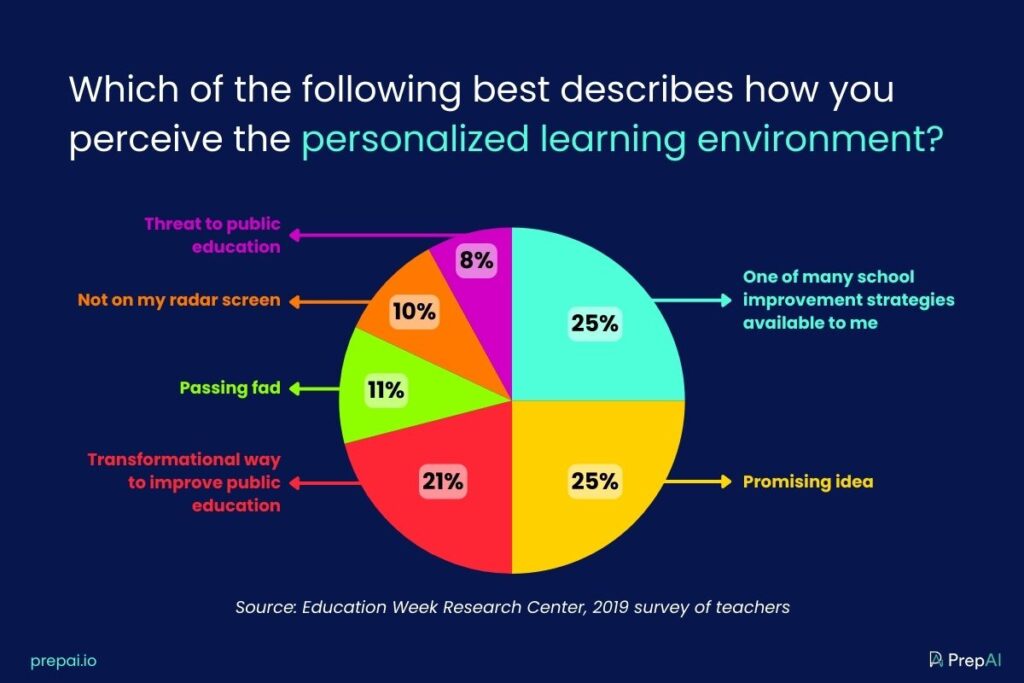
The concept of personalized learning is gaining popularity in recent times. It is the opposite of the current methods where all students in the classroom are taught in the same way. In K-12 education, the concept is used in varied forms such as allotting projects to students based on their specific interests, allowing students to pace the lessons based on their abilities, or creating a curriculum that can focus on each child’s emotional, social, and physical development.
3. Mobile Learning
M-learning or mobile learning is one of the trends in higher education marketing that promotes remote education. Here, students use mobile phones (smartphones, tablets, iPads, etc.) to access the study materials. They can learn on the go or from far-off locations with limited infrastructure. Mobile learning is also a part of employee training in many organizations. It allows students to learn at their convenience.
4. Gamification
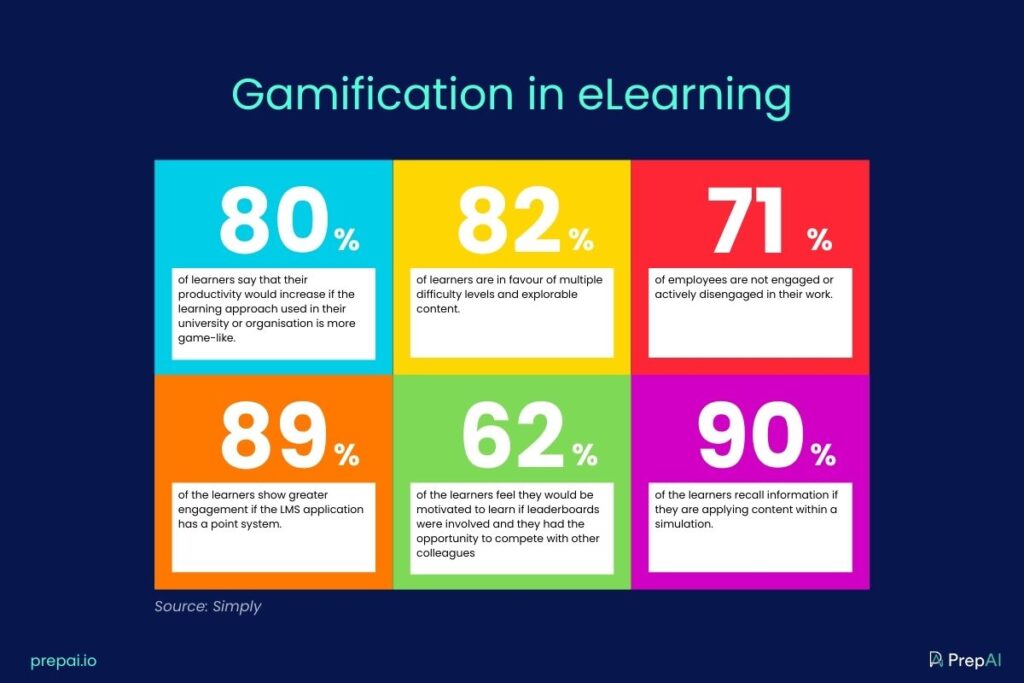
The global game-based learning market was $11.5 billion in 2023 and is projected to touch $77.4 billion by 2032 at a CAGR of 21.6%. Gamification makes learning fun by incorporating elements like achievement levels, reward points, badges, winner boards, etc. It encourages students to pay attention to the lessons and learn with greater focus. It also creates a sense of competition in students, which can increase their performance in exams.
5. Blended Learning
Blended learning is also called hybrid learning and combines two or more forms of teaching. Mostly it is a mix of online and in-person teaching. High schools, colleges, and universities opt for this model. Students use laptops and mobile phones in the classroom to access notes, projects, etc. They can attempt tests and quizzes through their personal devices. Teachers can create and conduct tests through the same tool and automatically grade the papers to share feedback.
6. Augmented and Virtual Reality
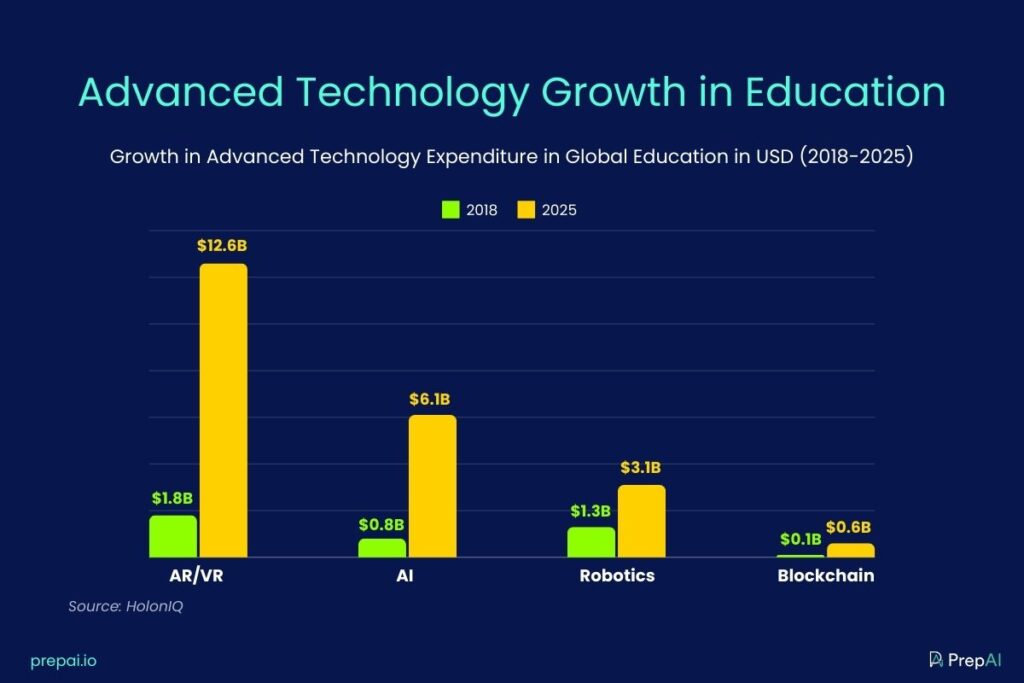
AR and VR can be used to create dynamic and immersive learning experiences in classrooms. While both technologies are different, they serve similar purposes and help students engage more with the study material. Teachers can simplify the concepts and use virtual settings to explain complex details easily. Classrooms have to be fitted with the necessary tools for this.
7. Sociol-emotional Learning
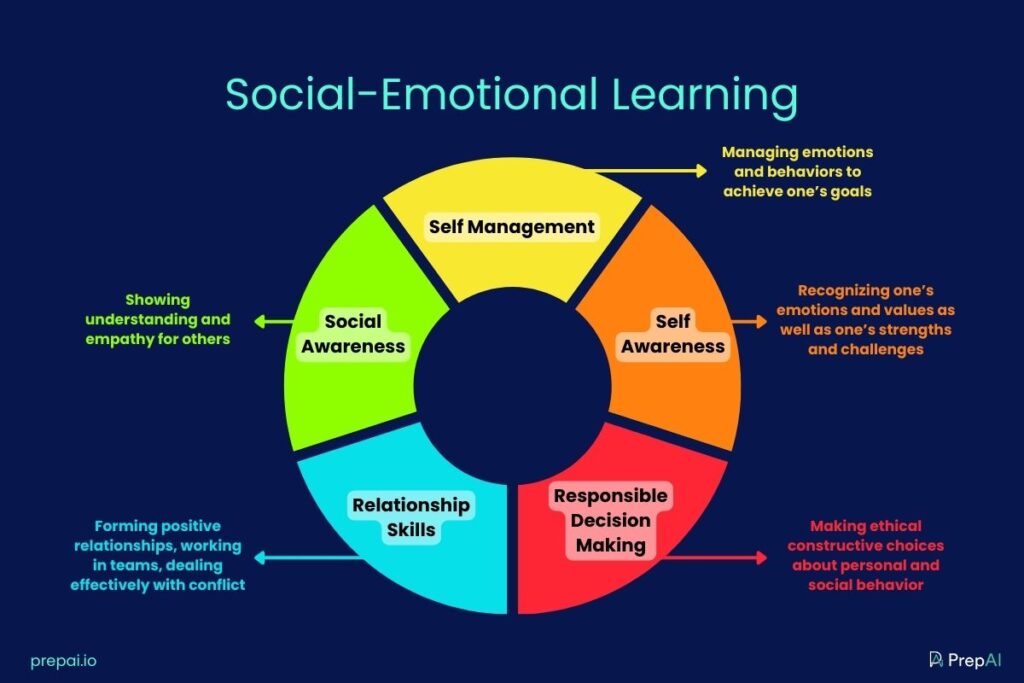
Also called SEL, it is one of the important current trends in education that focuses on helping kids and adults apply their knowledge and skills to create healthy identities for themselves, understand the community approach, be empathetic towards others, and become responsible. Schools need to make more effort to create safe spaces for children to grow and learn to be emotionally healthy adults.
8. Immersive Reality
Immersive reality blends the virtual elements with real elements to provide a sensory learning experience to students. For example, teachers can take students on a virtual tour of a museum, recreate a geographical location in the classroom, etc. It converts the auditory and written learning formats to a more rounded approach.
9. Adaptive Learning
Adaptive learning uses AI, ML, data analytics, and other advanced technologies to customize the learning material and timeline for each student. This is a part of many online courses, where students can determine when they want to study and how. The eLearning platform will offer personalized recommendations based on the student’s strengths and preferences.
10. Micro-Learning (Bite-Sized)
Bite-sized learning is one of the trends in early childhood education that breaks the course material into small units. Brevity is the key in this model, and the focus is on multimedia content. The text would be limited while the rest of the information would be in illustrations, audio, video, games, quizzes, etc. Teachers can use the PrepAI quiz generator to quickly create appealing content for students.
11. Neuroeducation
Neuroeducation combines neuroscience and education to debunk the myths about our learning abilities and brain functions. Neuroeducation can provide teachers and students with better tools to understand how the brain responds to learning in different environments and what can be done to increase learning capabilities. It is a type of experimental learning that uses a multidisciplinary approach to ensure students benefit from the lessons.
12. Niche Learning
As the name suggests, niche learning is a new trend where kids and adults can join courses for highly specific subjects, topics or skills. Instead of a generalized syllabus, the course will be structured around a highly specific concept. For example, SEO courses, creative writing workshops, training for cybersecurity awareness, and many more come under niche learning.
13. Mentoring by Experts
Another educational trend in 2024 is the increase in subscriptions for classes conducted by experts. Earlier, it was limited to certain niches like creative writing, painting, etc. However, now people from various fields are showing interest in signing up for classes by the masters as it enables them to learn from the best and interact with them online.
14. Increase in Independent Learning Platforms
Many independent entrepreneurs are offering learning platforms for school kids, college students, working professionals, and others who want to improve their knowledge and learn something new. For example, ByJu’s is a popular learning platform for kids in India while BetterUp is for people of all ages to join certification courses.
15. More Homeschooling Options
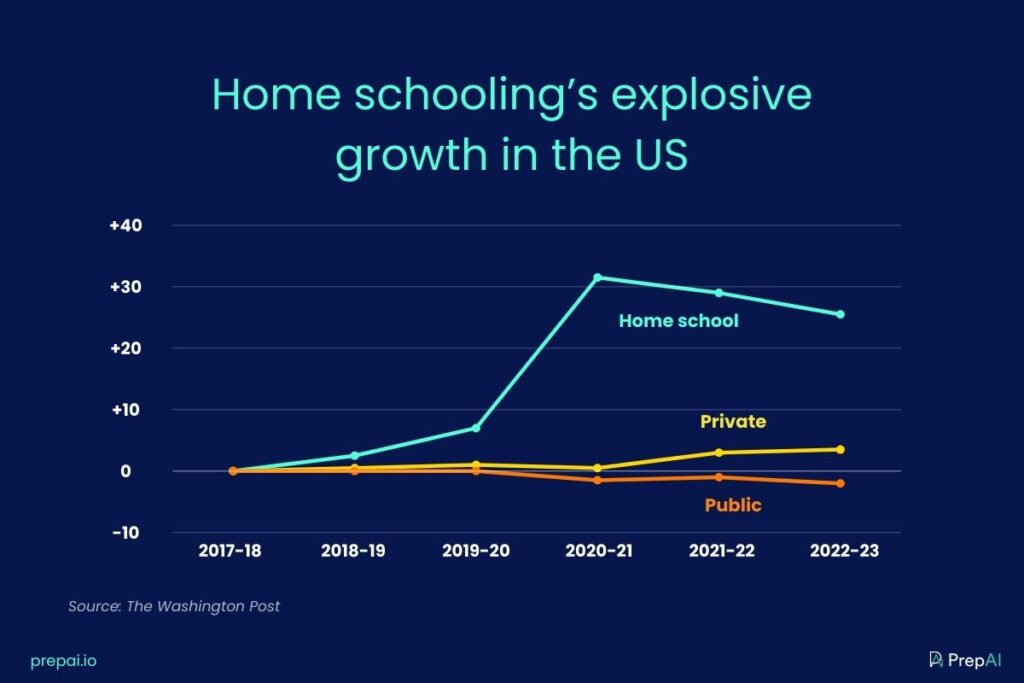
The Covid-19 pandemic has brought homeschooling to the forefront. There’s a definite increase in the percentage of students being homeschooled in the US. Additionally, private parties are offering platforms (online and offline) for homeschoolers to streamline their education. Parents are investing in testing tools to create question papers and quizzes, videos, files, etc., to assess their children.
16. Soft Skills Development
A survey on LinkedIn showed that 90% of HR feel soft skills are important when they hire candidates for the organization. This led to a renewed interest in promoting soft skill development among kids, young adults, and adults. Companies are also conducting workshops and training programs to help their employees brush up their soft skills.
17. Diverse Assessments
The process of conducting tests to measure students’ knowledge is also changing. The focus is slowly shifting from assessing retention abilities and memory power to measuring critical thinking. For example, PrepAI is based on Bloom’s Taxonomy framework. It is a test maker for teachers that can generate questions to test the higher-order thinking skills (HOTS) and critical thinking abilities in students. This provides a more accurate measure of their talents.
18. Inclusive Education
An inclusive classroom aims to bridge the gap between students from different backgrounds and the lessons taught by teachers. This is done by creating a holistic classroom with translator apps, etc. The students are grouped based on their preferences so that they can connect with like-minded people. This also promotes diversity in educational institutions.
19. Equity in Education
Equity in education is a strong trend in 2024 and will continue to be the focal point in 2025. This is where educational institutions would become a center for every student, irrespective of their background, status, socioeconomic condition, etc., would have a chance to study and begin their educational journey. The aim is to create a level playing field where students from marginal communities can access the same resources as the privileged ones.
20. From STEM to STEAM
While STEM stands for Science, Technology, Engineering, and Mathematics, STEAM adds Art to the list. The STEAM education setting allows students to gain practical experience by designing products and seeing how they work. For example, students can create a product and print a prototype through the 3D printer to study its features and make corrections. This empowers students to seamlessly move from a classroom to a workstation.
21. Human and AI Collaboration
Using AI-based tools is just one aspect of the process. The best way to benefit by adopting technology in education is to build an ecosystem that allows humans to collaborate with AI tools. This changes the teaching methodologies from being subject-centric to student-centric. It also makes learning more adaptive and increases overall efficiency.
What is the Education Landscape in 2024?
The education landscape is changing rapidly in 2024 as more schools, colleges, and universities are investing in technology. Moreover, we can see a greater focus on skill-based learning, personalization, blended learning, and the promotion of digital fluency (instead of limiting it to digital literacy). Additionally, educational institutions are aiming for a holistic approach to ensure the well-being of students and teachers, preventing the burnout and emotional disturbances. Sustainability is another aspect that will play a role in the education landscape in 2024.
Conclusion
The latest trends in education are disrupting the industry to bridge the gap between learning and technology. Moreover, the emotional and personal development of students is also getting more attention. This will help create a holistic environment where students can use technology without becoming victim to its downsides.
Educational institutions and educators have important decisions to make, as how they adopt technology can determine the results of their actions. Talk to an EdTech service provider to plan a strategic approach and improve the quality of learning.


